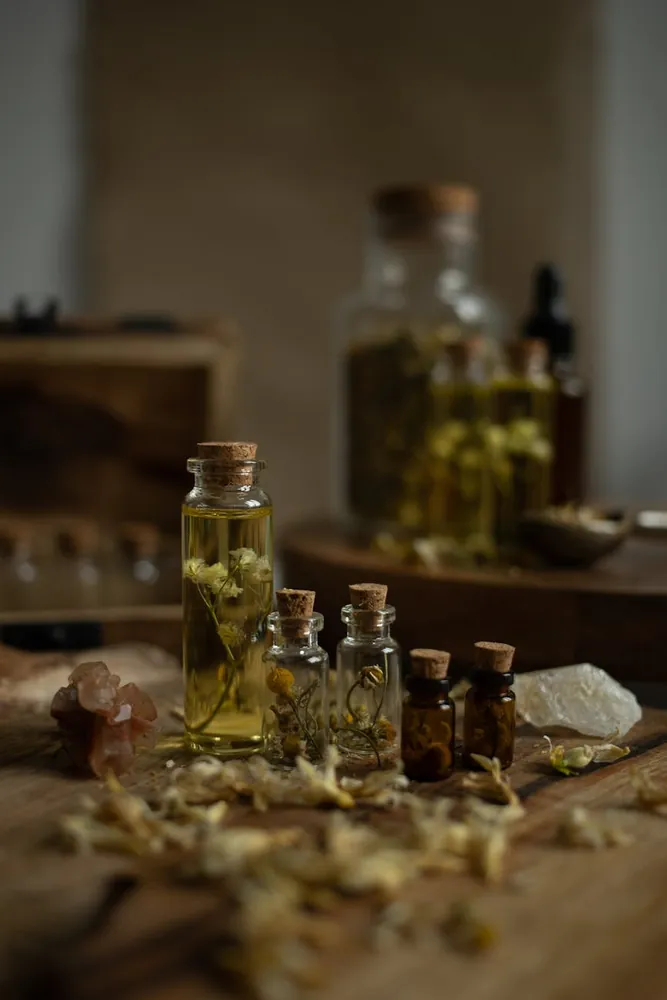Herb Preservation Techniques: From Pesto to Infused Oils

Understanding the Art of Herb Preservation
Herbs add a delightful burst of flavor to any dish, but too often, they spoil before being fully utilized. Preserving herbs effectively can not only enhance your culinary experiences but also minimize waste. Whether you've just harvested a bunch from your garden or have leftover sprigs from grocery shopping, there are several creative ways to extend their lifespan and maximize their flavors.
The Fresh Approach: Homemade Pesto
The Basics of Pesto Making
Pesto is a versatile sauce that can be made with a variety of herbs, not just basil. The traditional Italian pesto combines basil, garlic, pine nuts, Parmesan cheese, and olive oil. However, you can experiment with parsley, cilantro, or even mint depending on what you have on hand.
Step-by-Step Pesto Recipe
- Gather Ingredients: You'll need 2 cups of fresh herbs, 2 cloves of garlic, 1/4 cup of nuts (pine nuts, walnuts, or almonds), 1/2 cup of grated Parmesan cheese, and 1/2 cup of olive oil.
- Blend: In a food processor, combine herbs, garlic, and nuts. Pulse until finely chopped.
- Add Cheese: Add Parmesan cheese and pulse to incorporate.
- Emulsify: With the processor running, slowly drizzle in olive oil until the mixture is smooth.
- Adjust Seasoning: Taste and add salt and pepper as needed.
Tip: Freeze pesto in ice cube trays for easy portion control. Once frozen, transfer to a freezer bag for long-term storage.
Aromatic Adventure: Herb-Infused Oils
The Essence of Infused Oils
Infused oils are perfect for drizzling over salads, roasting vegetables, or as a finishing touch on pasta. By infusing oils with herbs, you capture their aromatic essence while extending their shelf life.
How to Make Herb-Infused Oil
- Select Your Herbs: Rosemary, thyme, and oregano work particularly well. Ensure they are completely dry to prevent bacterial growth.
- Heat the Oil: Gently heat 1 cup of olive oil over low heat. Avoid boiling to preserve the oil's quality.
- Add Herbs: Place a handful of herbs into a clean jar. Pour the warm oil over the herbs ensuring they are completely submerged.
- Sterilize: Seal the jar and place it in a saucepan with water. Gently simmer for 30 minutes to infuse.
- Store: Once cool, strain out the herbs and store the oil in a cool, dark place.
Caution: Infused oils should be used within two weeks to ensure freshness and safety. Store them in the refrigerator if possible.
Dried Delights: Herb Drying Techniques
The Simplicity of Air Drying
Air drying is one of the oldest methods of preserving herbs. It is best suited for low-moisture herbs like rosemary, thyme, and sage. Simply bundle a few stems together and hang them upside down in a dry, dark place for about one to two weeks.
Using a Dehydrator
If you have access to a food dehydrator, this method is faster and can handle a larger volume of herbs at once. Spread the herbs in a single layer and follow your dehydrator’s instructions for drying times and temperatures.
Note: Once dried, store herbs in airtight containers away from light and moisture.
The Ice Cube Tray Method
This method is excellent for preserving tender herbs like parsley and cilantro that don't dry well. Chop herbs finely and pack them into an ice cube tray. Fill each compartment with water or olive oil. Freeze until solid, then pop out the cubes and store them in freezer bags.
Canning: A Traditional Approach with a Twist
Canning isn't just for fruits and vegetables. By creating herb-infused vinegars or jams (think rosemary jelly), you can preserve the herbal flavors while creating something unique for your pantry.
Herb Vinegar Recipe
- Select Your Vinegar: White wine vinegar works well as it won’t overpower the herbs.
- Add Herbs: Place clean herbs into sterilized jars. Fill with vinegar ensuring all plant material is submerged.
- Macerate: Seal tightly and store in a cool dark place for at least two weeks, shaking occasionally.
This vinegar can be used in dressings or marinades offering a fresh herbaceous kick.
The Pros and Cons of Different Preservation Methods
- Pesto Making: Pros include flavor versatility and freezing ease. However, it requires some preparation time and fresh ingredients are essential.
- Infused Oils: These provide deep flavor but have a shorter shelf life and require careful preparation to avoid contamination.
- Dried Herbs: While easy to store and long-lasting, some flavor loss is inevitable.
The choice of preservation method depends on personal preference and intended use. For instance, if you seek a ready-to-use seasoning, drying might be optimal. Conversely, if you desire a fresh herbal sauce or flavorful oil, pesto or infusion methods are ideal.